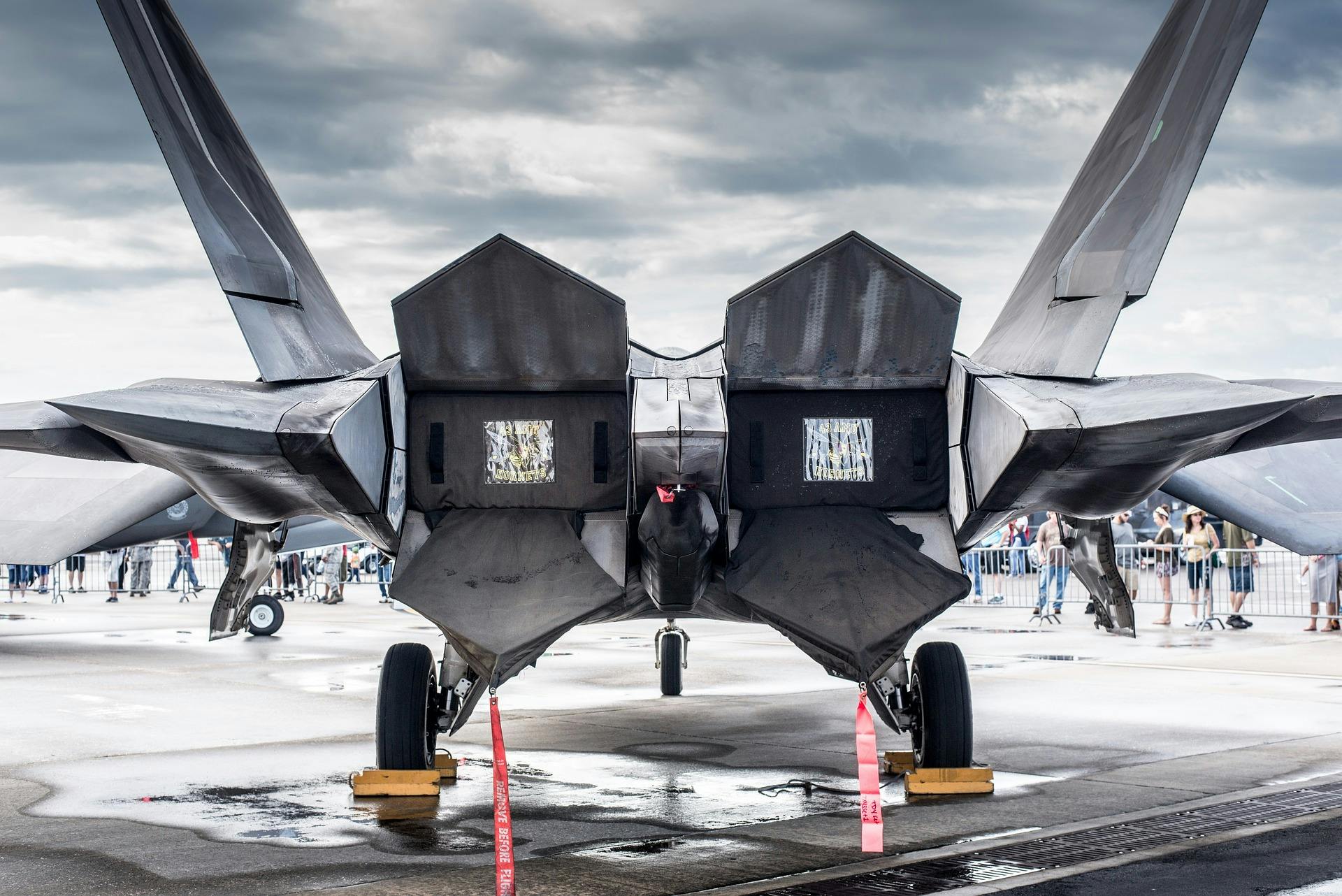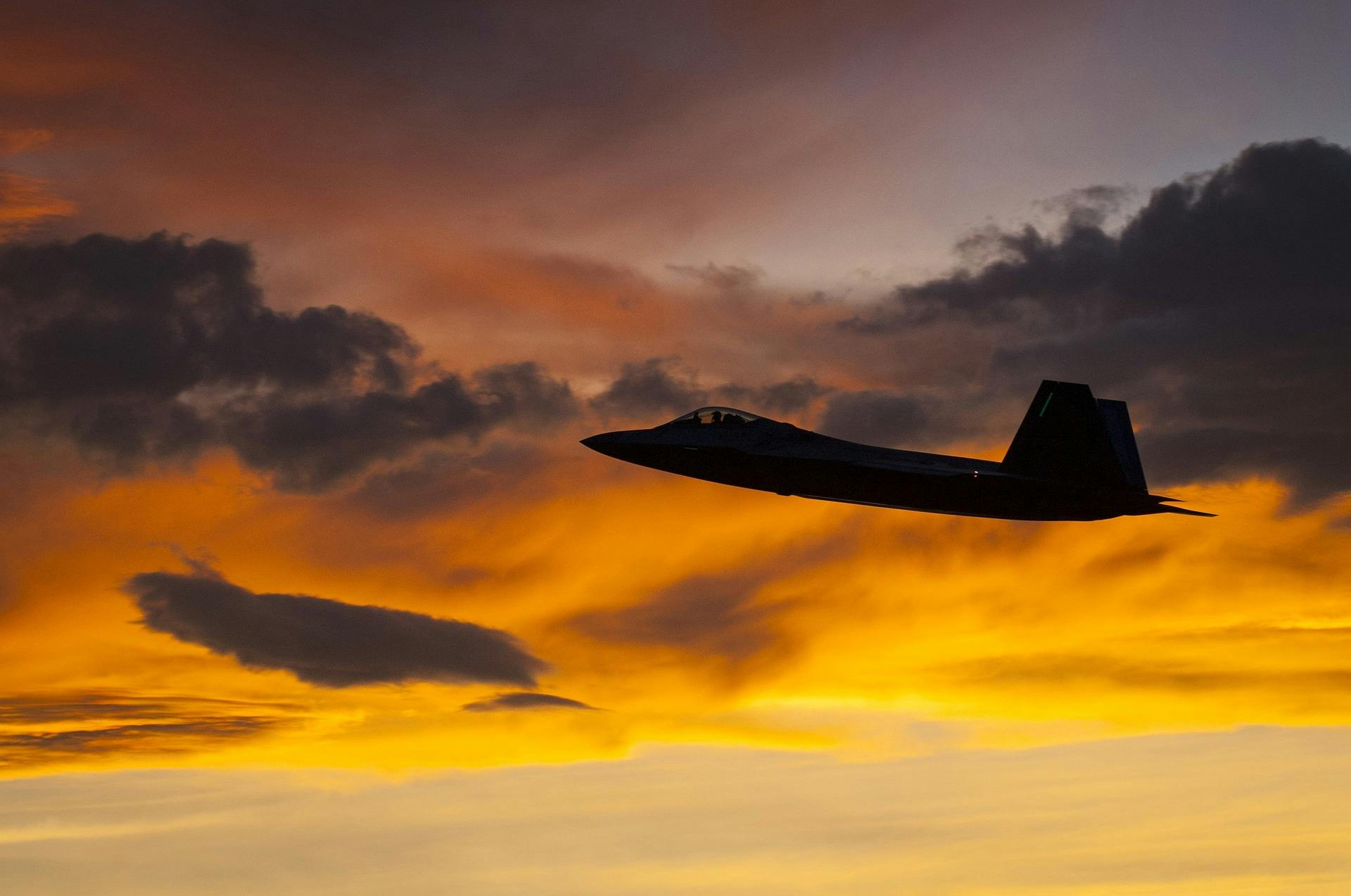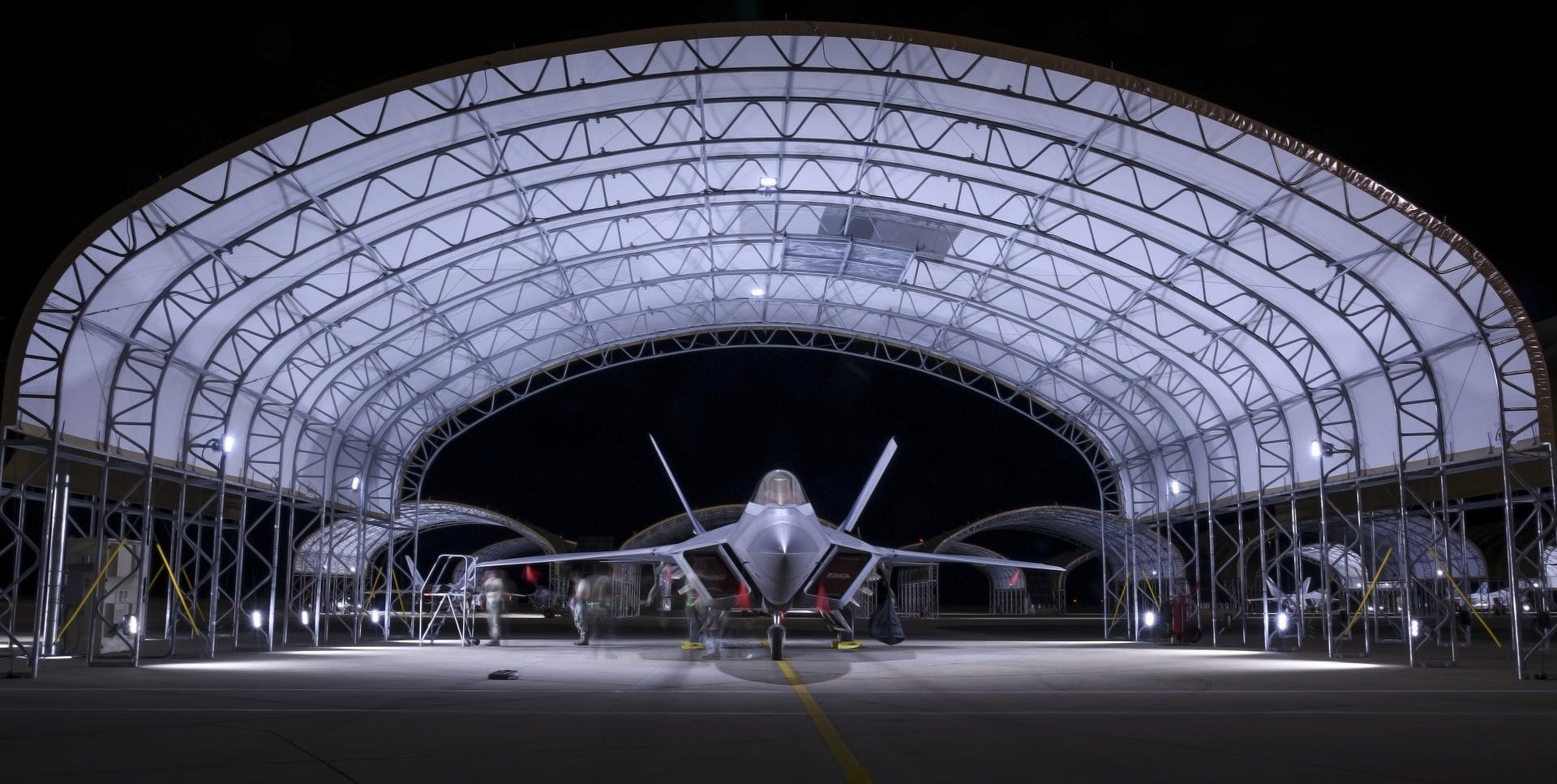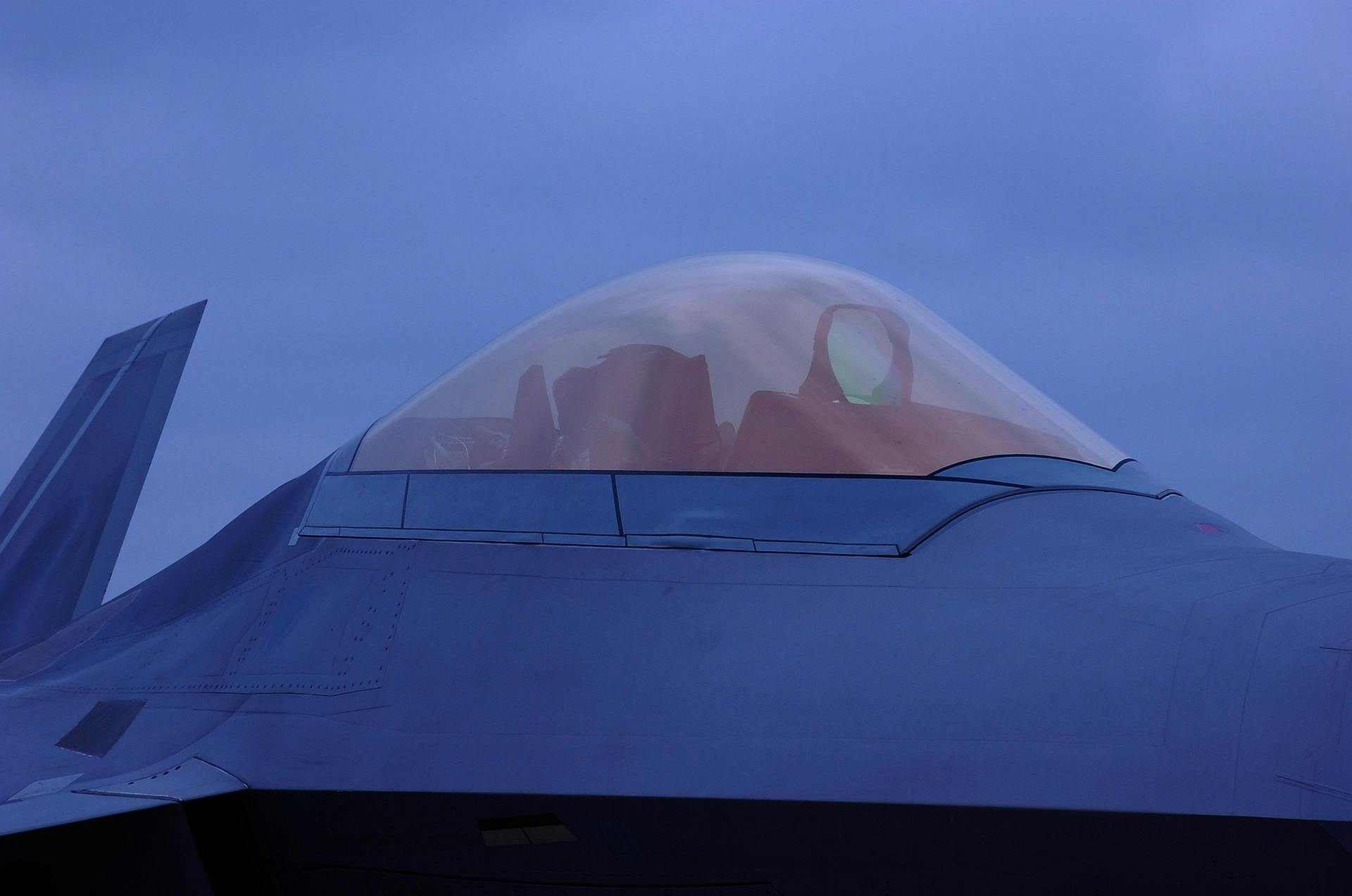The F-22 program overview and the controversial jet fighter’s new makeover

Blog
Ah, the heady 1990s. The end of the Cold War, and the birth of the internet (for practical purposes, anyway), grunge music, Tamagotchis, Harry Potter, Seinfeld, and unfortunately, the Macarena.
As the world prepared for a new, enlightened, kinder-and-gentler millennium, the USAF was also developing the stealthy and lethal next-generation F-22 Raptor air-superiority fighter aircraft as an intended replacement for the aging F-15 Eagle.
“But,” said the great thinkers and congressional committee members of the time, “If we no longer have to fear the USSR and its seemingly limitless fleets of MiGs, why do we need such an expensive and deadly jet fighter? Surely we can solve any future political disagreements with diplomacy, Crystal Pepsi, and a steady supply of Britney Spears music videos.”
Well, like the man says, time makes fools of us all. The lasting world peace promised by the 1990s hasn’t yet come to pass. What’s more, the Macarena refuses to die, if our recent attendance at wedding receptions is any indication… So what about the F-22? Is it still with us? Do we still need it? Let’s go over the basics of one of the most controversial and expensive fighter aircrafts in US history, and how it might be making a comeback worthy of LL Cool J.

What was the F-22s development timeline, and when did the fighter enter service?
In 1981, the United States Air Force identified a need for an Advanced Tactical Fighter that could compete with the USSR’s latest jets, and was intended to eventually replace both the F-15 Eagle and the F-16 Fighting Falcon.
The USAF issued the demonstration and validation request for proposals in September 1985, effectively beginning the “competition,” with stated requirements placing a strong emphasis on stealth characteristics and the ability to supercruise (fly at Mach 1 or faster without the use of afterburners).
Unlike many military trials, teaming-up between companies was encouraged, due to the immense investments required to develop the technology needed to achieve performance goals. Seven companies bid to develop prototypes, and in October 1986, Lockheed and Northrop were selected to move forward. Lockheed teamed up with Boeing and General Dynamics, and Northrop teamed with McDonnell Douglas, and the two contractor teams began a 50-month demonstration/validation phase, culminating in the flight test of two prototypes, the YF-22 and the YF-23, respectively.
The YF-22 prototype flew its maiden flight on 29 September 1990 and in-flight tests achieved up to Mach 1.58 in supercruise, which is impressive to this day. On 23 April 1991, the USAF announced that the Lockheed team (with Pratt & Whitney engines) were the winners of the ATF competition. The more radical YF-23 design was considered stealthier and faster, but the YF-22, with its thrust-vectoring engine nozzles, was deemed more maneuverable as well as less expensive and technologically risky. “Less expensive” is certainly a relative term, as we’ll see below.
The YF-22 underwent significant changes over the next few years including a complete reshaping of the wing, but the production-ready F-22 lifted off in September 1997, and achieved Initial Operational Capability (IOC) and entered service in 2005.

How much has the F-22 Raptor program cost, and how expensive is each aircraft?
In today’s dollars, the F-22 program has cost at least $91.4 billion (see below for details). The USAF originally planned to order 750 Advanced Tactical Fighters at a total program cost of $44.3 billion and procurement cost of $26.2 billion in fiscal year 1985 dollars, with production to begin in 1994. Over the intervening years, budgetary issues, political pressures, and instability following the end of the Cold War reduced this number to 648 aircraft, then 339, then 277, then 183 by 2004.
As of December 2010, the Department of Defense estimated the total acquisition cost (meaning the sum of research and development cost, procurement cost, and military construction cost) of a 179-aircraft F-22 program at about $67.3 billion in then-year dollars ($91.4B today). This number includes about $32.4 billion in research and development costs, about $34.2 billion in procurement costs, and $676.6 million in military construction costs.
Reports of an individual F-22A Raptor’s cost vary from approximately $140 million to $350 million per copy, depending on the source, but we like the figures produced when looking at the reported Program Acquisition Unit Cost (PAUC), which is the program’s total acquisition cost divided by the total number of aircraft acquired, including non-production aircraft. As of December 2010 with a 179-aircraft acquisition total, the F-22 program had a PAUC of $369.5 million in then-year dollars, and an Average Unit Procurement Cost (which is the program’s total procurement cost divided by 179 production aircraft) of $185.7 million in then-year dollars.
Adjusted for inflation, today that $185.7M figure is $252.2 million per aircraft.That’s a hefty chunk of change by any standards, and makes even the eye-wateringly expensive F-35 seem like a budget rental car by comparison. For perspective, an F-16, which still kicks serious ass, costs about $33 million in today's dollars.
So… did the F-22 live up to the hype? Is one F-22 really worth EIGHT F-16s? Kinda, yeah.

Why the F-22A Raptor is the best air-to-air fighter ever made
When it comes to ultimate air-superiority badassery, it’s hard to argue against the F-22’s capabilities. It’s legitimately stealthy on all four metrics (the ability to remain undetected via visual detection, noise levels, heat sensors, and radar waves) while producing massive power and speed. It has the most powerful engines on any fighter, and as noted above can supercruise without afterburners at Mach 1.5.
As far as maneuverability and air-to-air lethality, the F-22 is widely regarded as the best air-to-air fighter jet in the world. There are reports of a wargames exercise where 5 experienced F-15 pilots went up against a single F-22 and it wasn’t even close. The F-22 stomped all over the F-15, even though the venerable Eagle has a real-world air-to-air kill ratio of 104 to 0. None of the F-15 pilots even saw the F-22 during the exercise. That’s how important stealth capabilities have become in the 21st century.
Unlike the F-35 which was designed from the beginning to fill multiple roles for multiple branches and governments, the F-22A was designed solely to be an air-superiority fighter. There is something to be said for the principle of doing one thing, and doing it exceptionally well, rather than trying to be all things to all people. To further illustrate that point, the F-35 eventually had to be built in specialized variants for the Navy and Air Force, including non-VTOL-capable models.

The F-22’s shaky history, problems, and projected retirement
As noted above, the buzz and initial orders projected for the F-22 waned significantly starting in the late 1990s. It was deemed unnecessary, too expensive to build, and far too expensive to maintain. Congress began lobbying to kill the F-22 program.
The Brookings Institution wrote in September 1999, “Because it features a number of expensive weapons systems like the F-22—not to mention Joint Strike Fighters, F/A-18 E/F fighters, improved Army attack helicopters, and new Navy submarines—the Pentagon’s budget plan requires annual defense spending to increase by at least $20 billion in real terms in the future. But such a large boost in U.S. military spending does not appear likely during a period of relative peace [emphasis added]. That means something has to give. If defense systems such as the F-22 are bought in large numbers, necessities such as military readiness will almost certainly suffer.”
Of course, this was all before 9/11, which changed things a bit as far as the USA’s willingness to build and maintain a strong military presence and stay ahead of its enemies technologically. Though the F-22 had secured somewhat of a grace period for early retirement due to the renewed perception of the need to maintain air superiority, the Raptor was designed to go up against the best aircraft in the world, and thus in actual practice it saw no real service in the gulf war, flying primarily training missions while the “lesser” aircraft in the US’s arsenal did the bulk of the work conducting airstrikes and shooting down enemy fighters.
Additionally, the F-22As primary mission was to replace the excellent-yet-aging F-15 Eagle in an air superiority role, and most would argue that it has failed in that task. While the F-22 is undeniably superior in stealth capability and several performance metrics, in a practical and economic sense, it hasn’t lived up to its promises.
Military Watch Magazine sums up the main problems thus: “The Raptor proved to have a shorter range than the Eagle, had much greater difficulty incorporating upgrades, leaving its avionics behind the latest F-15 models by the mid 2010s, and had much higher maintenance requirements and operational costs which kept availability rates low and made fielding the aircraft in comparable numbers to the F-15 unviable. The program never moved beyond the basic F-22A airframe, with strike, naval, twin seat and improved variants failing to materialise, while the fighter itself saw 75 percent of production cut and had orders to terminate manufacturing given less than four years after the first aircraft entered service.”
In 2009, Secretary of Defense Robert Gates announced that the US would be ending the F-22 Raptor program in favor of the F-35 Joint Strike Fighter moving forward. The last F-22A was delivered to the USAF in May, 2012.
Though the F-22 has remained in service, it has also remained controversial due to some additional problems that came to light starting around 2008, when reports began surfacing of some pilots experiencing hypoxia-like symptoms when flying the F-22.
In November 2010, an F-22 crashed in Alaska, killing its pilot. Although the official accident report declared that hypoxia did not contribute to the accident, it was found that among other contributing factors, oxygen flow to the pilot had been interrupted.
This incident highlighted physiological issues with F-22 pilots, including 12 hypoxia-like incidents between 2008 and 2011, and led to a temporary grounding of the F-22 pending investigation and resolution. The problem gained further public attention when two F-22 pilots appeared on “60 Minutes” in 2012 to report their experiences and state their refusal to fly the F-22.
As a result, in 2012, the House Armed Services Committee held a hearing to evaluate the results of the Air Force’s investigation. Ultimately, the Air Force found that the F-22 issues were not due to a faulty supply of oxygen in the plane. Instead, a combination of factors was blamed—most notably, that a valve controlling the pilot’s G-vest could allow the vest to inflate unnecessarily, which physically restricted the pilot’s ability to breathe.
Though the F-22 has remained in the inventory despite no new aircraft being built, until recently it had become viewed as somewhat of a redheaded stepchild compared to the shiny new “joint strike fighter” F-35 Lightning II that could do fancy stuff like taking off and landing vertically (which is of questionable value tactically, though it looks frickin’ cool).
Military Watch Magazine reports, “The primary issue with the F-22 has not been its acquisition cost, but rather its high operational costs and maintenance needs, very low availability rates and considerable difficulty incorporating upgrades. The last of these issues has resulted in avionics which are largely out of date today, particularly compared to the F-35 and J-20 which integrate helmet mounted sights, state of the art data links and distributed aperture systems, although even modern fourth generation fighters including the F-15EX have avionics well over a decade ahead of those of the Raptor. The fighter’s very short range for an aircraft of its size, far lower than the F-15 and close to 50 percent lower than of competing foreign heavyweight designs, has also made its viability for operations in the highly contested Pacific theatre highly questionable.”

Reports of the F-22A’s death are greatly exaggerated
So, initial expectations of 750 F-22s were gutted to just 183, and over the past 10-15 years, it was assumed (and reported) that the Raptor was on its way out. It was deemed unnecessary, overly complex, too expensive, and difficult to upgrade. Well, don’t count the Raptor out just yet.
In November 2021, the USAF awarded Lockheed Martin a $10.9 billion contract to modernize the F-22. DefenseNews.com reports, “The massive indefinite-delivery, indefinite-quantity deal for the F-22 Program Office’s Advanced Raptor Enhancement and Sustainment, or ARES, program will cover up to a decade’s worth of sustainment and modernization of the fifth-generation fighter. According to a Defense Department announcement, the contract will cover services including upgrades, enhancements and fixes to the Raptor. Lockheed will also provide logistics services and modernization hardware kit procurement.”
The ARES program will ostensibly bring the avionics, radar, and Electronic Warfare capabilities of the F-22 up to par with the more easily modernized F-15 variants.
Interestingly, while in the ‘90s congress was pushing for the retirement of the F-22 and the USAF was emphasizing the need for the aircraft, recently it’s the USAF that has been pushing for the aircraft’s retirement, while that plan has met with strong opposition from both the House and Senate Armed Services Committees, which are pressing to not only keep the small F-22 fleet at full strength but also to invest heavily in upgrades.
How long can the F-22 stay relevant? The ARES program is specified to provide funding for the next decade, but in 2017, the USAF highlighted its plans to fly the F-22 until 2060. Time will tell, but it looks like we might get our money’s worth out of the F-22 program after all.
–By Jeff Davis, Intergalactic Scribe
Sources:
https://www.defensenews.com/air/2021/11/05/lockheed-wins-109b-contract-to-modernize-f-22/
https://crsreports.congress.gov/product/pdf/IN/IN10723
https://www.airforce-technology.com/analysis/most-expensive-military-aircraft/
https://www.brookings.edu/research/the-plane-truth-fewer-f-22s-mean-a-stronger-national-defense/
https://www.everycrsreport.com/reports/RL31673
https://www.cbsnews.com/news/is-the-air-forces-f-22-fighter-jet-making-pilots-sick/